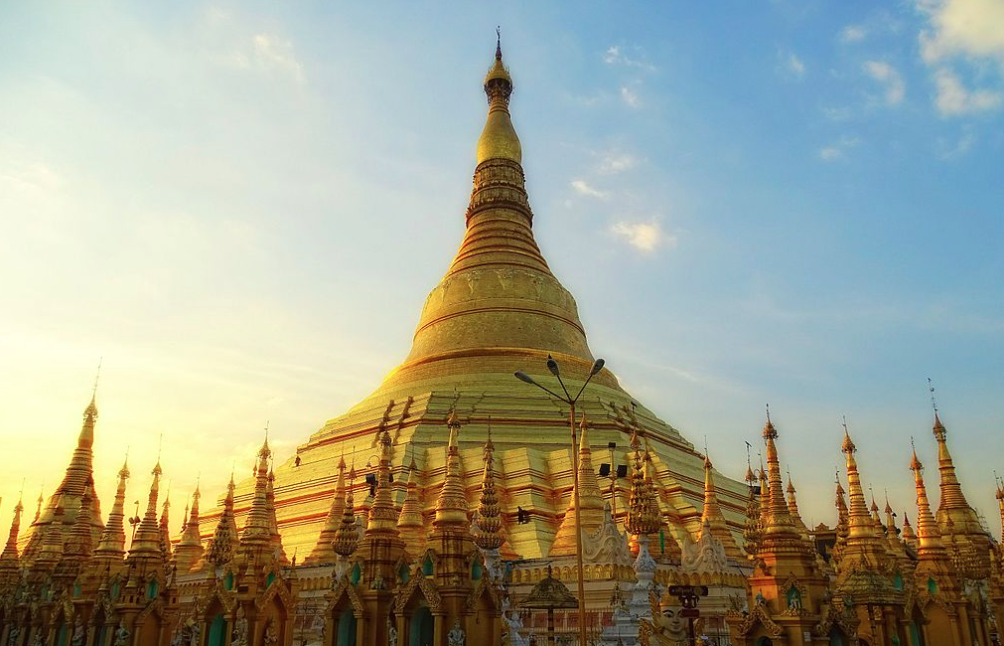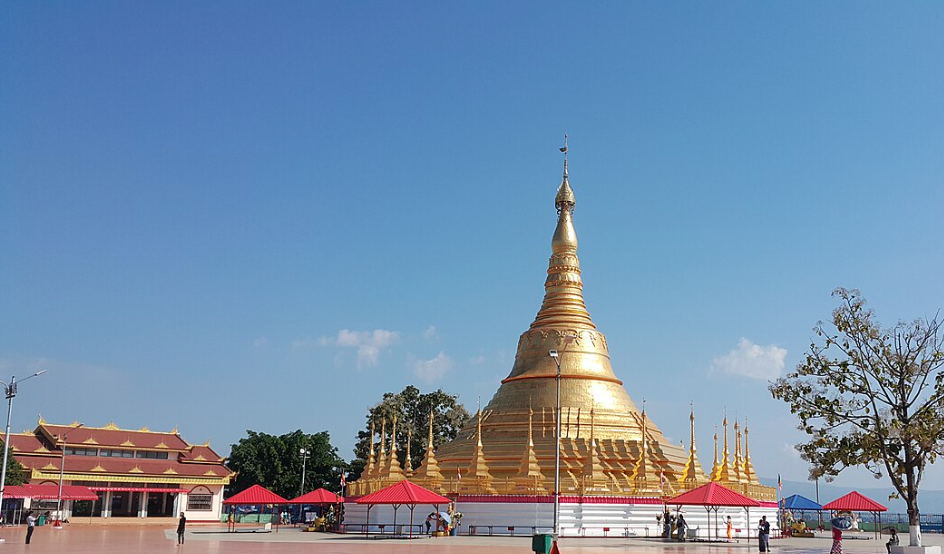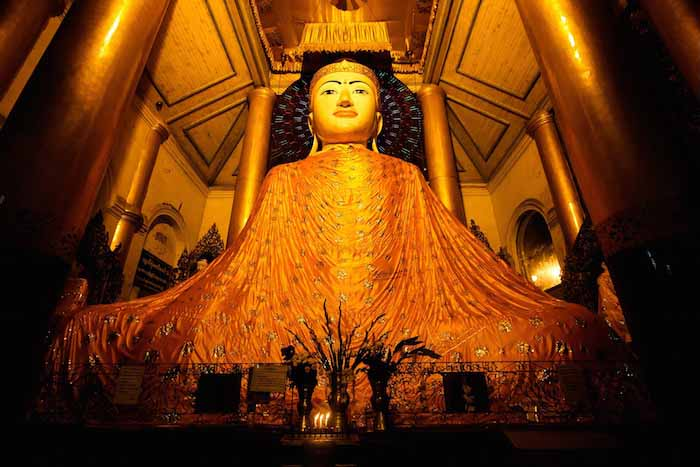Shwedagon Pagoda: The Golden Heart of Myanmar
A Glorious Landmark in Yangon
Shwedagon Pagoda, a revered symbol of Myanmar's Buddhist heritage, stands majestically in Yangon. Towering at 99.4 meters (326 feet), this golden stupa is adorned with gold leaf and plates, radiating spiritual grandeur. Encircling the main stupa are numerous smaller shrines and stupas, creating a breathtaking panorama of devotion and artistry.

Spiritual and Architectural Splendor
Topped with a gem-encrusted "seinbu" (diamond bud) and a seven-tiered "hti," Shwedagon represents the deep-rooted spirituality of Burmese Buddhism. According to legend, the pagoda enshrines sacred relics, including strands of the Buddha’s hair, making it one of the most significant pilgrimage sites in the country.

Every few years, its gold covering is meticulously restored, ensuring its luminous presence endures through time. Visitors walking around the stupa will encounter astrological representations of the eight days of the Burmese week, devotional centers positioned at cardinal points, and sacred Bodhi trees.
Cultural and Historical Significance

Beyond its religious importance, Shwedagon has been a historical hub for political movements. It served as a rallying point during the nationalist Thakin Party's anti-colonial protests in 1938-1939. Decades later, in 1988, it became a platform for pro-democracy demonstrations, with Aung San Suu Kyi delivering a landmark speech at its west gate.
A Living Testament to Faith and Resistance
Shwedagon Pagoda is more than just an architectural wonder—it embodies the resilience, spirituality, and history of Myanmar. Whether visiting for religious devotion or historical exploration, this golden marvel offers an unforgettable experience that continues to inspire generations.
Ger-Tran
